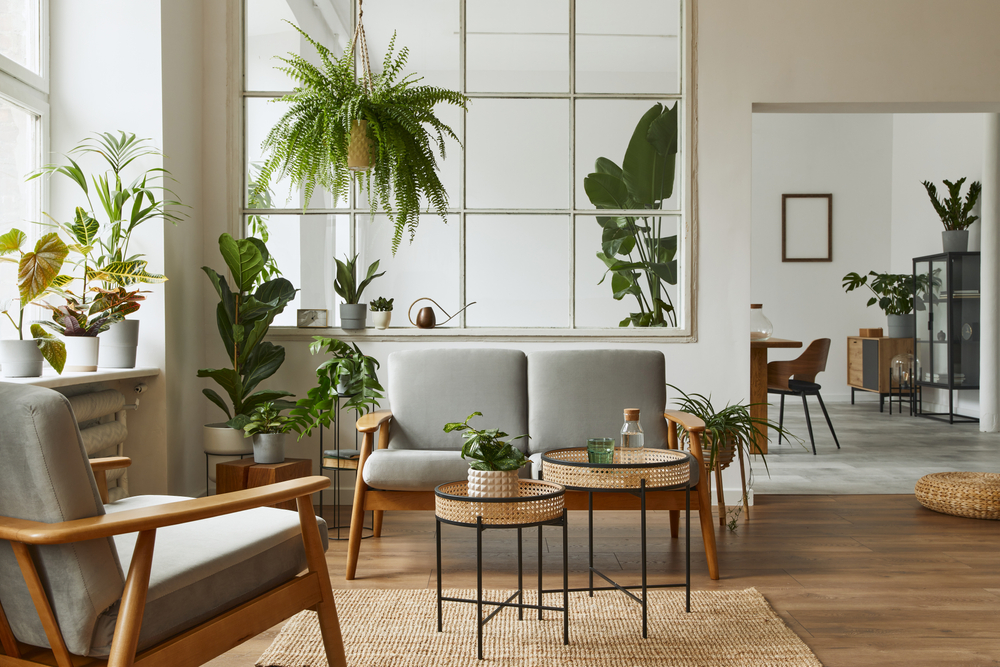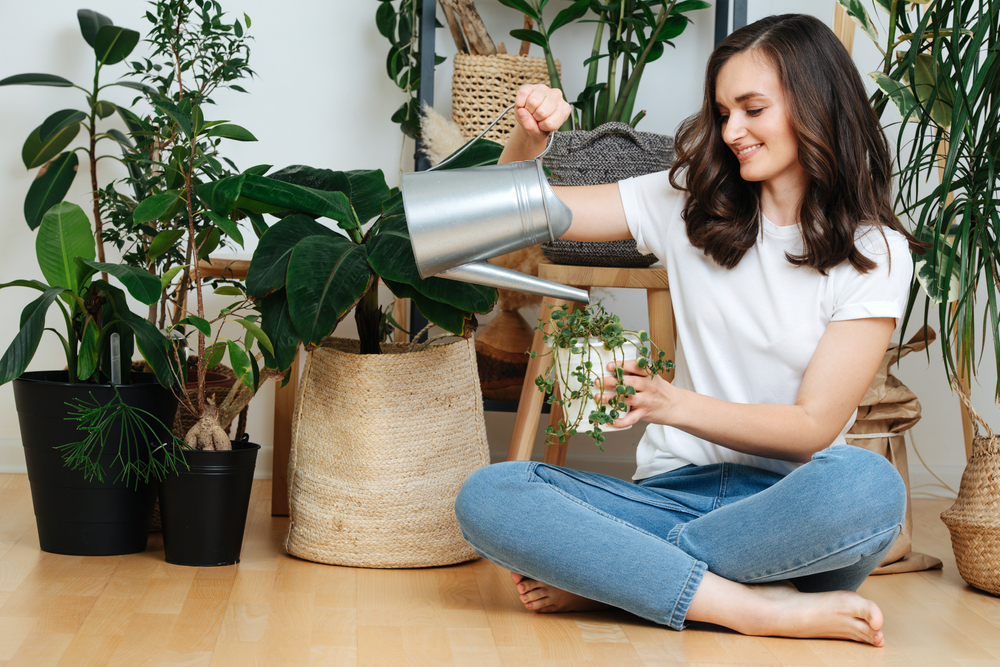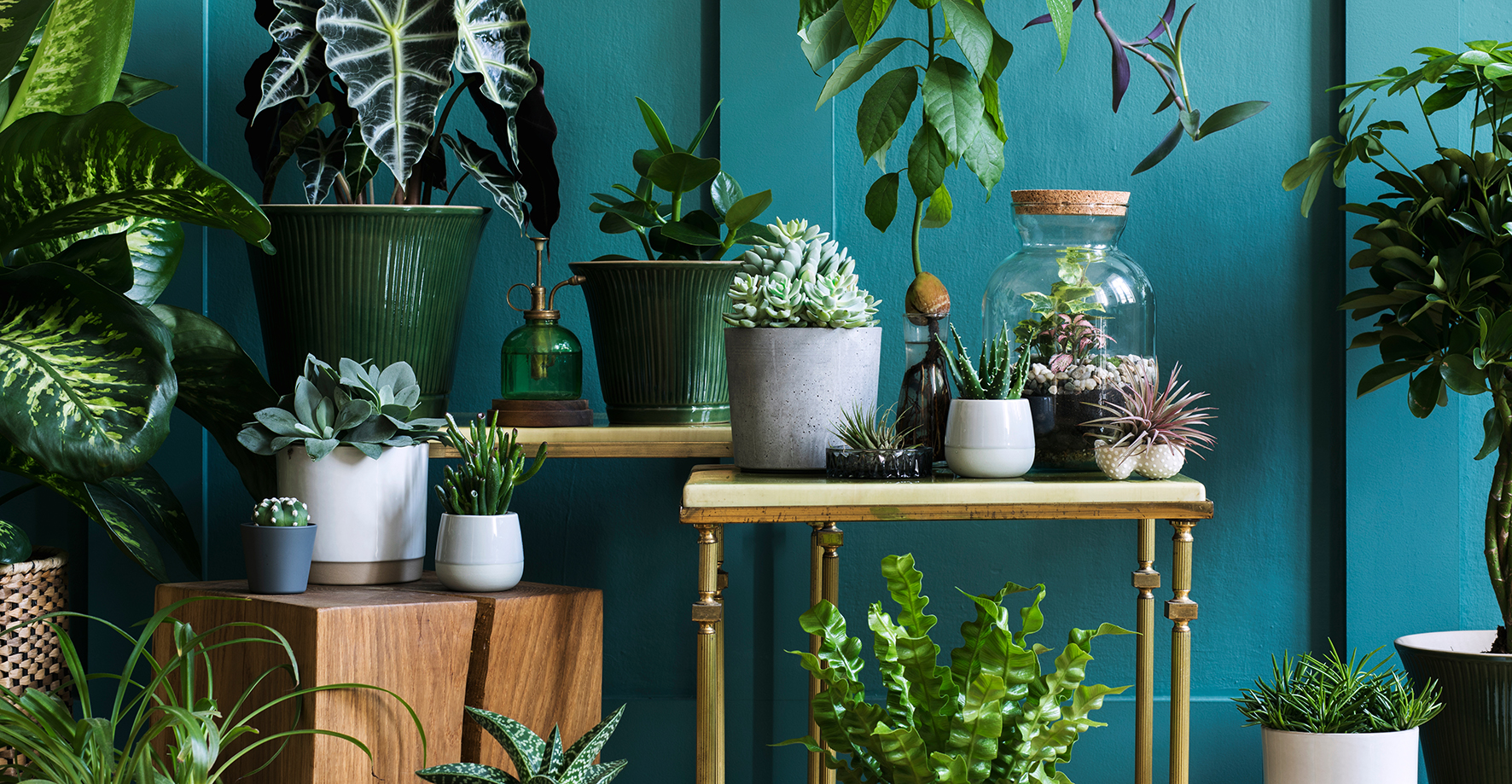House Plants are definitely having a moment. At least if the current #PlantTok and #Plantfluencer trends are anything to go by.
Plants have always been part of home decorating. But, in recent years, their popularity has soared, particularly among Millennials and Gen Z. It’s easy to see why.
Renters are much more likely to want easily transportable home decor that they can take with them when they move. Why spend lots of time and money painting and decorating (if the landlord even permits it) over and over again when you can make your pad look fantastic with some strategically placed house plants and take them with you when you go?
The second reason involves the rise of the term Plant Parent. House plants need to be nurtured and cared for. However, they are much less of a commitment than pets (or indeed children!) If you want to feel needed but would prefer your dependents didn’t bark the house down or scratch the furniture (and you’d maybe like the odd night out without worrying about who’ll care for them) plants are the answer.
Finally, and perhaps most importantly, house plants are attractive, bringing life and colour into any room in the house.
Choosing House Plants
Browse any garden centre, and you may start to feel a little overwhelmed at the huge range of different house plants to choose from. How do you know which ones would thrive in your home? Which ones need lots of intricate care, and which are tolerant of mild neglect? Which are safe to have around pets and young children?
That’s where we come in with our guide to the best indoor plants. This list is compiled considering several factors: popularity of the plants, ease of care, longevity, and, of course, how Instagrammable they are. Read on to find out which of these lush indoor plants might be best for your home.

Best for Pets
Choosing a house plant that won’t harm your pets if they have a little nibble can be quite stressful. While you can always place toxic plants high on a shelf or hanging basket to keep them out of reach of dogs, cats have a knack for reaching EVERYTHING. Unless the plant’s description carries toxicity information, every time you see an indoor plant you may like, a quick Google is needed to ensure it’s safe to have around your pets.
Prayer Plant (Calathea)
Prayer plants are among the best indoor plants for pet owners, not just because of their quirkiness but also because they are harmless to our furry friends. You and your bestie can both get enjoyment from the prayer plant without worrying about one of you being poisoned.
The prayer plant gets its name from how the leaves join together in the evenings, resembling two hands in prayer. There are many varieties to choose from, and most have decorative foliage. Some, such as Calathea Leopardina, are patterned with different shades of green and yellow. Others, like Calathea Roseopicta, are tinged with pink and purple hues for a truly unique look.
Best for a Sunny Spot
You may think all plants thrive in a sunny window. However, many indoor plants prefer a spot where they aren’t bathed in direct sunlight all day long. Too much direct sun can scorch a plant’s leaves and dry the soil out too quickly. So, while a north-facing window is generally fine, protect house plants from harsh sun rays beaming through a south-facing window.
Yucca Plant (Yucca elephantipes)
One house plant that does appreciate bright light is the yucca plant. It can cope with being placed in a south-facing window during the winter months. But in summer, an east-facing window, where it won’t be subjected to the sun’s strong rays all day long, is ideal.
As you’d expect from its exotic appearance, the yucca plant is native to hot, dry desert areas. It is used to dry air but can cope with normal household humidity levels. However, this isn’t a plant for the kitchen or bathroom. Yucca plants were one of the most popular house plants of the 1980s and seemed to disappear for a bit around the millennium. However, whether it’s down to a sense of retro-cool, or simply because they are attractive and easy to care for, yuccas have been making a steady comeback over the past few years.
Best for Low Light
Low light conditions can be difficult for plants as they need light for photosynthesis and healthy growth. House plants kept in low light may be slow-growing (which isn’t necessarily a problem) and tend to require less water as the soil remains moist for longer.
ZZ Plant (Zamioculcas zamiifolia)
The ZZ plant, or Zamioculcas zamiifolia to give it its Sunday name, is not particularly fussy about the amount of light it gets. While the ZZ plant grows faster in bright light, it is just as happy in low-light conditions. It even accepts fluorescent artificial light as a substitute for sunlight, making it ideal for rooms that receive little to no natural light.
The glossy, deep green leaves grow upright on fleshy stems that look amazing in any room setting. Also an excellent air purifying plant, this is quite an unusual plant that really stands out. As a member of the succulent plant family, ZZ plants store water in their leaves. This makes them drought-tolerant and forgiving of a haphazard watering schedule.
Best for Easy Care
One of the first qualities new plant parents look for in a house plant is how easy it is to care for. After all, you don’t want to spend time and money on something likely to die within just a few weeks. And if your thumb isn’t quite green yet, a low-maintenance, easy-to-grow houseplant is perfect.
Peace Lily (Spathiphyllum wallisii)
Peace lilies are renowned for being tolerant of a little neglect. So if you water your plants whenever you remember rather than to a strict watering schedule, your peace lily will be quite forgiving. In fact, as peace lilies can be prone to root rot, it’s actually better to skip a watering now and again than to water the plant too much. Water whenever the top two inches of soil feel dry and recreate humid conditions by misting every few days.
The peace lily gets its name from the white flower spathes that grow above the dark green foliage as they resemble white flags of peace. Peace lilies thrive in bright, indirect light but cope well with lower light conditions.
Best for Cleaner Air
It’s well known that plants are excellent air purifiers, but some indoor plants are better than others at cleaning the air. These house plants absorb harmful toxins, such as benzene and formaldehyde, from the environment, improving air quality as they do so. The more indoor plants you have in a room, the cleaner the air will be.
Swiss Cheese Plant (Monstera Deliciosa)
Growing to an impressive size, the Swiss cheese plant boasts broad leaves that help purify the air and increase humidity in the home. They are suitable for any room of the house, so can be used to clean the air of the rooms you relax in the most. A bright spot in the living room or bedroom is ideal.
Swiss cheese plants thrive in bright, indirect light. Keep this indoor plant away from windows where the strong sun may scorch the beautifully lush dark green leaves. Water when the top layer of soil feels dry, being careful not to overwater, as this can lead to root rot.
Best for Creating a Statement
Indoor plants can make excellent focal points in any room of the house. A tall floor-standing plant or a long, trailing plant catches the eye and acts as a living statement piece of decor.
Fiddle Leaf Fig (Ficus lyrata)
A thoughtfully placed fiddle leaf fig can be a real showstopper. This tropical plant boasts huge fiddle-shaped leaves (hence the name) that can reach an impressive 30cm long. The plant itself can grow up to 2m tall indoors.
Fiddle leaf fig plants thrive in bright indirect light and prefer moist soil that drains well. Water whenever the top two inches of soil feel dry. Once you’ve found the perfect spot for your fiddle leaf fig, keep it there. These indoor plants don’t like to be moved around, so don’t be dismayed if your new plant looks a bit tired when it arrives. It’ll soon settle into its new home.
Best for Trailing
Trailing plants are fantastic for home decor, especially if you don’t have much floor space. Place them from shelves or cabinets where they can sweep gracefully downwards, or allow them to spill and cascade from hanging baskets.
Devil’s Ivy (Epipremnum aureum)
Also known as Golden Pothos, this striking indoor plant features large, heart-shaped leaves that make it one of the most popular house plants for trailing. (If you prefer, pothos can also get trained as a climbing plant up a moss pole.) Golden pothos could fit into several categories, as it is easy to grow, almost impossible to kill and thrives in most light conditions.
Devil’s ivy can reach up to 2m long when grown indoors, making it perfect for spilling from high planters. Keep this indoor plant out of direct sunlight and let the soil dry out between waterings.

Best for Positive Energy
Inviting nature indoors is one of the best ways to lift the energy and improve the feng shui inside the home. Making your home an attractive place to be is key to achieving peace of mind.
Snake Plant (Sansevieria trifasciata)
Rigid and strong, the leaves of the snake plant grow upwards, boosting the chi in a room and promoting positive energy. The strong sword-like leaves offer a sense of protection, helping you to relax and feel safe and sound.
Also known as Mother-In-Law’s Tongue, snake plants are low-maintenance indoor plants that don’t require much looking after. The snake plant is drought tolerant, so infrequent watering is fine. Allow the soil to dry out between waterings to emulate the plant’s dry native conditions.
Best for Propagating
Propagating plants is a great way to increase your house plant collection without spending any money on new plants. Some plants propagate via seed, while others need to be separated as they grow and yet others can be grown from cuttings. If you have a plant you’d love more of, propagating it is an excellent way to produce more.
Spider Plant (Chlorophytum comosum)
The spider plant is one of the best indoor plants for easy propagation. Mature spider plants grow offshoots – also known as pups, babies, or spiderettes – on long stems. These pups are essentially baby plants and can easily be used to create more spider plants to place around your home or share with family and friends.
Spider plant propagation doesn’t take much of a green thumb – even new plant parents shouldn’t have much trouble. Simply cut the spider plant baby off at the base of the stem and place it in a small jar or vase of water, ensuring the leaves aren’t submerged. After a couple of weeks, you’ll notice small roots growing from the base of the baby plant. Allow these to reach at least a couple of inches long, then plant them in a pot filled with fertile soil. Water well and watch your new plants thrive.
Best for Bathrooms
It can be tricky to find the correct indoor plant to suit the humid environment of the bathroom, especially when the humidity is often paired with low light conditions. After all, not all plants are well-suited to damp conditions. However, some popular house plants thrive in high humidity and are perfect for absorbing extra moisture from the air.
Aloe Vera (Aloe barbadensis)
Aloe vera is perfect for growing in the bathroom. Not only is a pretty plant that is easy to care for, it has healing properties and is often used for reducing redness and skin inflammation. Aloe vera is also handy for treating minor burns and soothing the skin. The healing gel can be used straight from the plant, so it makes perfect sense to keep this beauty in the bathroom.
Native to hot, dry parts of the world aloe vera stores moisture in its bright green leaves, so water sparingly and your plant will be just fine. Ensure the soil dries out before offering another drink. As long as it’s not overwatered, aloe vera is almost impossible to kill, making it the perfect starter plant for beginners.





